Cancer: Overview, Types, Symptoms, causes, cure and natural treatment
Cancer is the one of the most dangerous disease which cure is almost impossible. A disease in which abnormal cells divide uncontrollably and destroy body tissue. Cancer, also called malignancy, is an abnormal growth of cells. There are more than 100 types of cancer, including breast cancer, skin cancer, lung cancer, colon cancer, prostate cancer, and lymphoma. Symptoms vary depending on the type.Cancer treatment may include chemotherapy, radiation, and/or surgery.
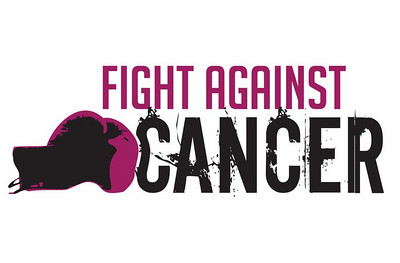
In the United States, an estimated 15.5 million people with a history of cancer were living as of January 1, 2016, according to a 2018 report from the American Cancer Society.

In the United States, an estimated 15.5 million people with a history of cancer were living as of January 1, 2016, according to a 2018 report from the American Cancer Society.

Most of the body's cells have specific functions and fixed lifespans. While it may sound like a bad thing, cell death is part of a natural and beneficial phenomenon called apotheosis.
A cell receives instructions to die so that the body can replace it with a newer cell that functions better. Cancerous cells lack the components that instruct them to stop dividing and to die.
As a result, they build up in the body, using oxygen and nutrients that would usually nourish other cells. Cancerous cells can form tumors, impair the immune system and cause other changes that prevent the body from functioning regularly.
Cancerous cells may appear in one area, then spread via the lymph nodes. These are clusters of immune cells located throughout the body.
Recommended Health Products
Causes of cancer
The substances that cause cancer are called carcinogens. A carcinogen may be a chemical substance, such as certain molecules in tobacco smoke. The cause of cancer may be environmental agents, viral or genetic factors.
We should bear in mind, though, that in the majority of cancer cases we cannot attribute the disease to a single cause.
We can roughly divide cancer risk factors into the following groups:
- biological or internal factors, such as age, gender, inherited genetic defects and skin type
- environmental exposure, for instance to radon and UV radiation, and fine particulate matter
- occupational risk factors, including carcinogens such as many chemicals, radioactive materials and asbestos.
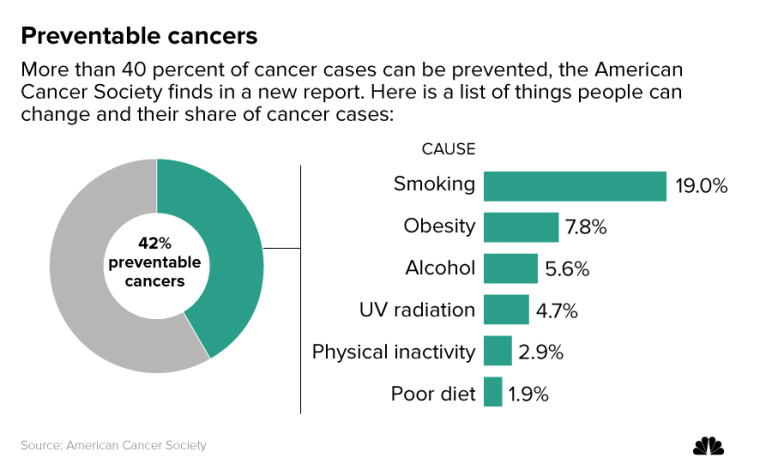
lifestyle-related factors.
Lifestyle-related factors that cause cancer include:
- tobacco
- alcohol
- UV radiation in sunlight
- some food-related factors, such as nitrites and poly aromatic hydrocarbons generated by barbecuing food).
Lifestyles can prevent cancer
Cancer causing factors related to work and living environments include:
- asbestos fibres
- tar and pitch
- polynuclear hydrocarbons (e.g. benzopyrene)
- Some metal compounds
- Some plastic chemicals (e.g. Vinyl chloride)
Bacteria and viruses can cause cancer:
- Helicobacter pylori (H. pylori, which causes gastritis)
- HBV, HCV (hepatitis viruses that cause hepatitis)
- HPV (human papilloma virus, papilloma virus, which causes changes eg. Cervical cells)
- EBV (Epstein-Barr virus, the herpes virus that causes inflammation of the throat lymphoid)
Radiation can cause cancer:
- ionising radiation (e.g. X-ray radiation, soil radon)- non-ionised radiation (the sun’s ultraviolet radiation)
Some drugs may increase the risk of cancer:
- certain antineoplastic agents
- certain hormones
- medicines that cause immune deficiency

In 5 – 10 per cent of breast cancer genetic predisposition plays an important role in the emergence of the disease.
Is cancer genetic?
Genetic factors can contribute to the development of cancer.
A person's genetic code tells their cells when to divide and expire. Changes in the genes can lead to faulty instructions, and cancer can result.
Genes also influence the cells' production of proteins, and proteins carry many of the instructions for cellular growth and division.
Some genes change proteins that would usually repair damaged cells. This can lead to cancer. If a parent has these genes, they may pass on the altered instructions to their offspring.
Some genetic changes occur after birth, and factors such as smoking and sun exposure can increase the risk.
Other changes that can result in cancer take place in the chemical signals that determine how the body deploys, or "expresses" specific genes.
Finally, a person can inherit a predisposition for a type of cancer. A doctor may refer to this as having a hereditary cancer syndrome. Inherited genetic mutations significantly contribute to the development of 5–10 percent of cancer cases.
Treatments
Innovative research has fueled the development of new medications and treatment technologies.
Doctors usually prescribe treatments based on the type of cancer, its stage at diagnosis, and the person's overall health.
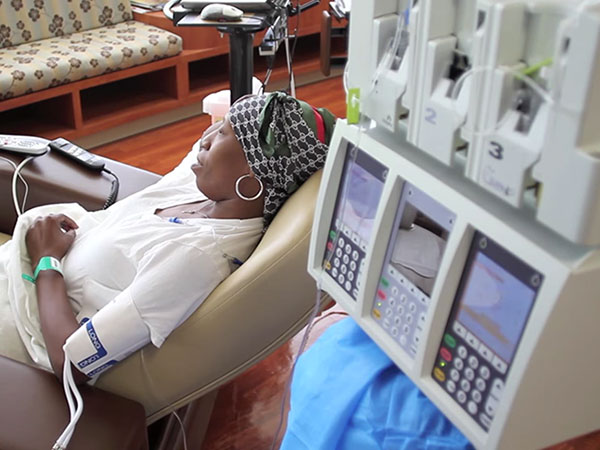
Below are examples of approaches to cancer treatment:
Chemotherapy aims to kill cancerous cells with medications that target rapidly dividing cells. The drugs can also help shrink tumors, but the side effects can be severe.
Hormone therapy involves taking medications that change how certain hormones work or interfere with the body's ability to produce them. When hormones play a significant role, as with prostate and breast cancers, this is a common approach.
Immunotherapy uses medications and other treatments to boost the immune system and encourage it to fight cancerous cells. Two examples of these treatments are checkpoint inhibitors and adoptive cell transfer.
Precision medicine, or personalized medicine, is a newer, developing approach. It involves using genetic testing to determine the best treatments for a person's particular presentation of cancer. Researchers have yet to show that it can effectively treat all types of cancer, however.
Radiation therapy uses high-dose radiation to kill cancerous cells. Also, a doctor may recommend using radiation to shrink a tumor before surgery or reduce tumor-related symptoms.
Stem cell transplant can be especially beneficial for people with blood-related cancers, such as leukemia or lymphoma. It involves removing cells, such as red or white blood cells, that chemotherapy or radiation has destroyed. Lab technicians then strengthen the cells and put them back into the body.
Surgery is often a part of a treatment plan when a person has a cancerous tumor. Also, a surgeon may remove lymph nodes to reduce or prevent the disease's spread.
Targeted therapies perform functions within cancerous cells to prevent them from multiplying. They can also boost the immune system. Two examples of these therapies are small-molecule drugs and monoclonal antibodies.
Doctors will often employ more than one type of treatment to maximize effectiveness.
natural cure of cancer
Have you ever wondered how effective natural cancer treatments can be? Around 20 years ago, my sister was diagnosed with breast cancer. This was crazy for my family at the time because my sister was a gym teacher, swim instructor and was always considered to be “healthy.”
After her diagnosis, she took the advice of her oncologists at the Cleveland Clinic and underwent a mastectomy followed by many rounds of chemotherapy. I can still remember seeing my sister’s hair fall out and thinking she had aged 10 years in the few weeks following chemo.
Praise God, after all of her treatments, she was diagnosed as being “cancer-free” and healthy. But for the next several years, she was sicker than she’d ever been in her life and struggled with constipation, candida, depression and chronic fatigue syndrome.
Then, around nine years after her first diagnosis, a terrible thing happened: She was diagnosed with cancer again. At that point, I had experience working in the natural health field, so when I flew home, we prayed together and talked about the best healthcare strategy. She decided to pursue natural cancer treatments by focusing on diet and lifestyle changes.
My Sister started following an all-natural plan that included vegetable juicing, probiotic foods, immune-boosting supplements, stress reducing techniques and prayer. And after only four months, the tumors on her lungs had shrunk significantly and one year after that, she was again diagnosed as being “cancer-free” and healthy. It’s now been 10 years and my sister recently turned 60 years old — and she is in the best shape of her life, regularly water skiing, running and still going strong.
I want to be clear: I am not claiming that what we did with my sister is a cancer cure. But I believe these natural therapies, either used by themselves or in conjunction with conventional medical treatments, may support the body in the healing process.
I am often asked, “What exactly did your sister do?” Here are the natural cancer treatments and strategies she followed to heal her body.
Most Effective Natural Cancer Treatments

1. The Gerson Therapy and Juicing
I see in him one of the most eminent geniuses in the history of medicine. Many of his basic ideas have been adopted without having his name connected with them. Yet, he has achieved more than seemed possible under adverse conditions. He leaves a legacy which commands attention and which will assure him his due place. Those whom he has cured will now attest to the truth of his ideas.
~ Albert Schweitzer, MD (Nobel Peace Prize Winner, 1952)
Who was Albert Schweitzer talking about?
He was referring to Dr. Max Gerson, the German-born American medical doctor who developed one of the most effective natural cancer treatments over 90 years ago. Coined the “Gerson Therapy,” Dr. Gerson helped hundreds of cancer patients activate their body’s extraordinary ability to heal itself by recommending:
- Organic, plant-based foods
- Raw juices
-Coffee enemas
- Natural supplements
In the words of the Gerson Institute:
With its whole-body approach to healing, the Gerson Therapy naturally reactivates your body’s magnificent ability to heal itself — with no damaging side effects. This a powerful, natural treatment boosts the body’s own immune system to heal cancer, arthritis, heart disease, allergies, and many other degenerative diseases.
How the Gerson Therapy Works
The Gerson Therapy targets the most significant metabolic requirements in your body. How? Believe it or not, this therapy allows you to reap the nutritional benefits of consuming 15–20 pounds of organically grown fruits and vegetables each day! Here’s the breakdown:
The Gerson Diet – Consisting of eating only organic fruits, vegetables and sprouted ancient grains, the Gerson Diet is exceptionally rich in vitamins, minerals and enzymes. It’s also very low in fats, proteins and sodium. The meal plan advises cancer patients to drink 13 glasses of freshly prepared juice, eat three plant-based meals, and only snack on fresh fruits each day. Also, the traditional Gerson Therapy recommends consuming raw beef liver since it is the most nutrient-dense food on the planet and extremely high in vitamin B12.
Juicing – According to the Gerson Institute, “Fresh pressed juice from raw foods provides the easiest and most effective way of providing high quality nutrition.” The cancer-fighting protocol calls for patients to drink fresh vegetables each day, including raw carrots or apples and green-leaf juice. To preserve the nutritional content, the juice should be prepared hourly using a two-step juicer or a masticating juicer used with a separate hydraulic press. This helps prevent denaturation — when vitamins, minerals and enzymes are destroyed. (Most commercial juicers spin so fast that they heat up juice to the point they are basically pasteurized!)
Detoxification – The Gerson Therapy utilizes coffee enemas as the primary method of detoxing the body by increasing the parasympathetic nervous system. For cancer patients, this may take up to five enemas each day. The importance of keeping the body free of toxins is stressed by Dr. Gerson’s daughter, Charlotte:
The moment a patient is put on the full therapy, the combined effect of the food, the juices and the medication causes the immune system to attack and kill tumor tissue, besides working to flush out accumulated toxins from the body tissues. This great clearing-out procedure carries the risk of overburdening and poisoning the liver — the all-important organ of detoxification, which, in a cancer patient, is bound to be already damaged and debilitated.
Supplements – The Gerson Therapy recommends the following organic medicinal therapies:
- Lugol’s solution
- Pancreatic enzymes
- Potassium compound
- Thyroid hormone
- Vitamin B12
2. The Budwig Protocol
Over the years, I have been given a lot of different advice as well, so when I heard about Dr. Budwig’s protocol I too was very skeptical, until I tried it. Numerous, independent clinical cancer studies published in major medical journals world-wide confirm Dr. Budwig’s findings. Over 40 years ago, Dr. Budwig presented clear and convincing evidence, which has been confirmed by hundreds of other related scientific research papers since, that the essential fatty acids were at the core of the answer to the cancer problem.
~ Robert E. Willner, MD, PhD (The Cancer Solution)
In 1952, Dr. Johanna Budwig was the German Government’s Senior Expert on lipids and pharmacology and was considered one of the leading global authorities on fats and oils. During her research, she discovered that many of the conventional processed fats and hydrogenated oils were destroying the membranes of our cells, and this caused diseased cells and toxicity.
Developing a specific diet — in this case, the Budwig diet protocol — to counteract this cancer-causing process, Dr. Budwig claimed to have had over a 90 percent success rate with her protocol over a 50-year period!
How the Budwig Protocol Works
When you replace deadly processed fats and oils with life-giving unsaturated/saturated fatty acids, your cells rebuild and are rejuvenated. Dr. Budwig found that consuming a mixture of cottage cheese, flaxseeds, and flaxseed oil had the best results.
When cottage cheese (which is rich in sulfur protein and saturated fats) and flax (which is high in electron-rich unsaturated fatty acids) are combined this way, your body is able to absorb these vital nutrients easier and quicker.
My “Beyond Budwig” Recipe
Because of the changes in agriculture, I suggest this updated 21st century version of the Budwig Protocol:
6 ounces cultured dairy (cottage cheese, goat’s milk kefir or amasai)
4 tablespoons sprouted and ground chia or flax
1 tablespoon flaxseed oil
1 teaspoon turmeric powder
1/4 teaspoon black pepper
Mix all the ingredients together in bowl or blender and consume once daily.
For more details, check out the article and video I posted on the Budwig Diet Protocol for Cancer.
3. Proteolytic Enzyme Therapy
In 1906, John Beard first proposed that pancreatic proteolytic enzymes represent the body’s main defense against cancer. Beard focused on high dose porcine-based pancreatic enzyme therapy and eating a holistic diet to create an internal environment in which the body can more thoroughly heal itself.
While it wasn’t researched for most of the 20th century, a few scientists picked up the concept in the 1960s. But it wasn’t until Nicholas J. Gonzalez, MD started to evaluate the concept at Cornell University Medical College in 1981 that people started to seriously consider this natural approach.
How the Pancreatic Proteolytic Enzyme Approach Works
The autonomic nervous system consists of the sympathetic (“fight” or “flight”) and autonomic (“rest” and “digest”) nervous systems. Basing his protocol off of Dr. Francis Pottenger’s research in the 1920s and 1930s, Gonzalez’s work centers on balancing these two systems, as they are suspected to be one of the major causes of cancer.
He discovered that a vegetarian diet suppresses sympathetic function, whereas the opposite is true with a meat-rich diet. So after dividing patients into different categories based of their metabolic differences, genetic and physical make-up, here are the recommendations:
People with epithelial tumors like lung, pancreas, colon, prostate, uterine cancers are prescribed a largely plant-based diet with minimal to no animal protein.
People with blood or immune based tumors like leukemia, myeloma or lymphoma are put on a high-animal protein, high-fat diet with minimal-to-moderate plant foods.
In addition, these physicians recommend taking 5 grams of proteolytic enzymes 3 times daily on an empty stomach between meals to reduce inflammation.
According to Dr. Josef Beuth, the research behind this natural cancer treatment is pretty airtight:
These studies demonstrated that systemic enzyme therapy significantly decreased tumor-induced and therapy-induced side effects and complaints such as nausea, gastrointestinal complaints, fatigue, weight loss, and restlessness and obviously stabilized the quality of life.
4. Vitamin C Chelation
Chelation therapy uses chemicals or natural compounds to remove toxic metals from the body. The word “chelate” means to grab onto something, which describes chelating agents’ ability to grab onto toxins.
Generally, only holistic doctors and naturopaths use chelation therapy because it is not an officially “approved therapy” for most conditions in medicine today. When it is employed in the medical system, however, it is most commonly used to remove calcium deposits from arteries.
In a study published in Free Radical Biology & Medicine, vitamin C chelation therapy was found to be highly pro-oxidant after just one hour of treatment. This benefit lasted more than 16 treatments in the absence of nutrient supplementation and even provided “beneficial long-term antioxidant effects.”
Pro-oxidation isn’t always good, but in this case it is.
It was discovered that, “Pro-oxidant effects appear to be responsible for destroying tumor cells. These pro-oxidant effects may also induce endogenous antioxidant systems in normal tissues that offer protection against carcinogenic insult!”
Along with vitamin C chelation, consuming more Vitamin C rich foods may also prevent and fight cancer.
5. Frankincense Essential Oil Therapy
Dr. Budwig recommends frankincense essential oil (especially when it comes to fighting brain tumors). And now research trials highlighting frankincense’s potential canter-fighting abilities are filling medical journals. Specifically, Indian Frankincense (Boswellia serrata) has been shown clinically to being a potentially effective treatment for:
- Brain cancer
- Breast cancer
- Colon cancer
- Pancreatic cancer
- Prostate cancer
- Stomach cancer
According to researchers out of Baylor University Medical Center in Dallas, the potential cancer-killing effects of frankincense are due in part to its ability to influence your genes to promote healing. Baylor cancer scientists emphasize that this potency makes Boswellia serrata a viable candidate for both cancer prevention and treatment!
6. Probiotic Foods and Supplements
Best known as “good bacteria,” probiotics are microorganisms that promote a natural balance in your intestinal microflora. The best way to include probiotics in your diet is in their most natural state, which includes raw milk products such as cheese, kefir and yogurt.
Recent research has suggested that probiotic supplementation may be able to stop tumor growth. And this makes perfect sense because 80 percent of your immune system is housed in your gut. In addition to supporting your immunity to disease, research has also shown that probiotics can improve digestive function and mineral absorption as well as aid in healing leaky gut, which all contribute to helping prevent cancer.
7. Sunshine and Vitamin D3
Science continues to support the fact that high levels of heart healthy, fat-soluble vitamins and minerals are key to keeping your body free of cancer. And recently, there has been considerable progress regarding the role that fat-soluble vitamin D3 plays in cancer prevention.
Research studies are mounting and a 2007 randomized placebo controlled double blind clinical trial suggests that vitamin D may be a highly effective way to help prevent cancer.
The study, published in the American Journal of Clinical Nutrition, is truly groundbreaking as it evaluated nearly 1,200 postmenopausal women for four years and tracked how a 1,400–1,500 milligram supplement of calcium compared to a calcium supplement plus 1,100 IU vitamin D3 in preventing cancer.
The results were amazing. After just one year of vitamin D3-added supplementation, the risk of developing all cancer types was decreased by an astounding 77 percent! Compared to the 0 percent improvement in the placebo and calcium supplement only groups, this is truly remarkable.
The Best Way to Get Vitamin D
To best prevent breast cancer, research suggests you should supplement so that your vitamin D3 levels are at least 40-60 ng/ml and up to 80 ng/ml.
The sweet spot you’re shooting for is 50-70 ng/ml. Here’s the best way to get there:
Optimize vitamin D3 through 20 minutes of sun exposure everyday. This is best done by exposing 40 percent of your body to the sun between 10 am and 2 pm.
Take an oral supplement containing around 5,000 to 10,000 IU of vitamin D3 daily. Because they are fat-soluble, make sure that you take them with some healthy “fatty” foods containing coconut oil or a probiotic-rich drink like kefir.
It can be challenging to find a pure supplement on the market, so try to find a combination formula of astaxanthin, omega-3 fish oil and vitamin D3.
8. Turmeric and Curcumin
While the link between curcumin and disease reversal has been widely examined, the use of this spice in relation to cancer is one of the most thoroughly researched topics.
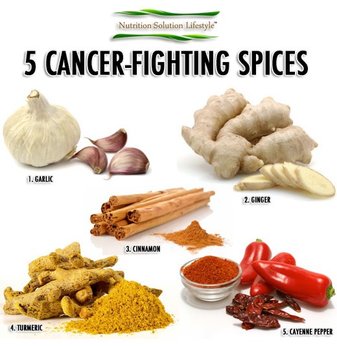
A number of laboratory studies on cancer cells suggest that curcumin does have anticancer effects. It seems to be able to fight cancer cells and prevent more from growing. It seems to be most effective against breast cancer, bowel cancer, stomach cancer and skin cancer cells.
In fact, a 2007 laboratory study showed that the combined treatment of curcumin with chemotherapy eliminated more bowel cancer cells than chemotherapy alone.
Other laboratory studies have also shown that curcumin interferes with cancer development, growth and spread. And researchers have reported that curcumin blocked the formation of cancer-causing enzymes in rodents.
Bottom line: Evidence suggests that in general turmeric works well to help stop cancer in its tracks and is especially effective at helping to treat breast cancer, colon cancer and skin cancer.
9. Oxygen Therapy and Hyperbaric Chambers
All normal cells have an absolute requirement for oxygen, but cancer cells can live without oxygen — a rule without exception. Deprive a cell 35 percent of its oxygen for 48 hours and it may become cancerous.
~ Otto Warburg, MD (Nobel Prize in Physiology Winner, 1931)
Dr. Warburg made it clear that the root cause of cancer is oxygen deficiency, which creates an acidic state in the human body. He also discovered that cancer cells do not breathe oxygen and cannot survive in the presence of high levels of oxygen, as found in an alkaline state.
We’ve all heard that antioxidants kill free radicals in the body and reverse oxidative stress-causing chronic disease. This is one of the reasons why I love to use blueberries in my morning Berry Protein Smoothie! But is eating blueberries enough to cure cancer?
Probably not. That’s why supplementing with oxygen therapy and utilizing a hyperbaric chamber is highly beneficial for people seeking natural cancer treatments.
Because the air pressure inside a hyperbaric oxygen chamber is about 2.5 times greater than the normal pressure in the atmosphere, it causes your blood to carry more oxygen to the organs and tissues in your body. Thought to heal everything from infected wounds to radiation injuries, many people claim that it has cured them of cancer. While it’s not quite mainstream yet, a growing numbers of hospitals have purchased some units to help their patients.
10. Prayer and Building Peace
A joyful heart is good medicine, but a broken spirit dries up the bones.
In addition to the many research studies that have been conducted on the healing benefits of prayer, maintaining mental peace and a positive outlook are absolutely critical to cancer prevention and treatment.
Some people utilize Eastern techniques like practicing tai chi or simply feeling gratitude, and these are highly effective in their own right. My favorite forms of meditation, however, consist of prayer, gratitude and reading the Bible.
Whatever your preference, make sure your focus is on living a stress-free lifestyle filled with peace and joy!
Bonus Therapies
Immune-Boosting Mushrooms
Mushrooms have been used in Chinese medicine for over 4,000 years, and research regarding the cordycep and reishi species and cancer therapy has been pretty straightforward. They can:
Potentially increase survival
Help shrink tumors
Boost your immune system
Reduce radiotherapy and chemotherapy side effects like nausea and hair loss
Keto Diet
A keto diet that eliminates excess refined sugar and other processed carbohydrates may be effective in reducing or fighting cancer. It’s not a coincidence that some of the best cancer-fighting foods are on the keto diet food list.
Of course, these results all depend on which extracts you choose and their concentrations. Some sources even suggest that supplementing with a complementary dose of vitamin C is also necessary.
Real cancer fighting story
Stories of people who have battled cancer and are now living happy, healthy lives can help fill so many hearts with inspiration. Those suffering from cancer can seek hope and motivation in the words of those who have successfully won their fights against the disease. And their stories can also help caregivers understand what the patients need most.

PN Kamala: An 81-year-old who won over cancer with the support of her family and the world of poetry:
A native of Sivakasi, 81-year-old PN Kamala was enjoying the second innings of her life at her home in the company of her grandchildren. Being the head of the family, Kamala was equally active in household decisions and worked along with her son and daughter-in-law.
In 2005, due to some uneasiness, Kamala decided to go for a health check-up. This was when she was diagnosed with breast cancer.
The news broke Kamala’s lively personality as she started counting days. This was an entirely different challenge for her. Thinking she would live for another six months, she started preparing her will. In this state of hopelessness, Kamala’s daughter-in-law, Seetha, decided to take control of her treatment and care. Along with her, Kamala’s son also made sure she was around a positive environment, along with proper emotional support. The treatment was multi-fold and needed constant monitoring and care.
Today, almost after a decade of her cancer treatment, Kamala lives life like an 18-year-old. She keeps herself busy, delivering talks on topical issues of public interest and literature around India. She travels, writes and loves to spend time with her family and grandchildren.
During her treatment, she wrote a collection of poems – Putchi Piranda Boobalam (Poems born out of Cancer). She penned another book titled Rojavukku (To my Beloved Rose)dedicated to her imaginary friend, Rose, who is a cancer patient. The book describes how Kamala advises Rose on how to deal with cancer. Both literary pieces were translated into English. At present, Kamala continues with her research and raising awareness on cancer. She credits her victory over cancer to her family who supported her through the journey.
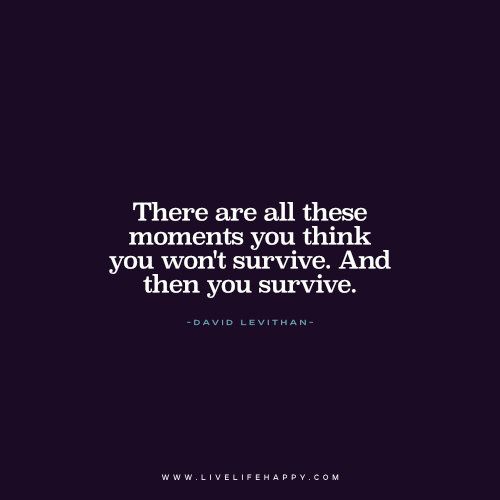
No comments